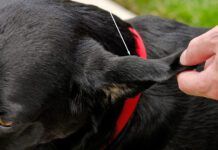Regarding Pat Millers article on flying with dogs (Fearless Flying, March 2003): What I have learned after at least 10 round trips on at least 3 airlines with a 14-pound Norwich Terrier is that they are all different.
Some have a 10-inch maximum, some a 10-pound maximum, some 14 or 15 pounds. Basically, they just look to see if your dog will reasonably fit into the crate.
The Texas health certificate asks only for a rabies shot and a statement that the pet is free of communicable disease, which allows for titer test results. (By the way, Texas has just become enlightened enough to change the rabies vaccination requirement from every year to every three years!)
Most airlines now require a health certificate within 10 days of the beginning of the trip only.
When you make your reservation, you get a confirmation number for you and another one for your dog. Make sure you have both.
I always warn the person in front of me that there is a dog under their seat in the event (which has never happened so far) that, if the dog barks, that person will not have a heart attack.
Not all airports are alike. All the security checks that I have been through require me to take the dog out of the carrier to go through the security gate. And some are downright dog friendly. Salt Lake City, for instance, is happy to have your dog on a leash anywhere in the airport.
Until airlines and airports recognize that dogs are good people to have aboard, we should treat bringing our dog with us as a privilege and not abuse it by, for instance, taking our pets out of the carrier where this is not allowed.
-Carlynn Ricks
via e-mail
———-
Many years ago I began asking flight attendants if they would check their dogs. Not one said yes. So when I got a Bedlington Terrier, my vacation plans received a new, very restrictive constraint.
The other trouble I run into is that USDA regulations, which apply only to cargo, not to in-cabin travel, say the dog must be able to stand up and turn around in the carrier. Many flight people are ill informed about this and it can cause problems at check-in for a full grown Bedlington.
Youve probably heard there is a new private airline, Companion Air, that would solve all our problems, but it is a bit pricey. They will start flying soon; for more information, see www.companionair.com.
-Suzanne Haggerty
Cape May, NJ
———-
We would never ship our dogs by air, either, unless we were in a privately chartered aircraft allowing dogs in the passenger cabin or had our dogs with us in a commercial aircraft passenger cabin.
However, the article failed to mention several problems. More animals than just dogs and cats are shipped by air. Exactly how are airline personnel expected to inspect and verify the health status of snakes, birds, fish, rats, turtles, etc., prior to and after shipment? In most commercial passenger aircraft during fight there is no access to baggage compartments. How are airline personnel supposed to accomplish closer observation of animals in flight?
Commercial airlines are in the business of transporting people, not animals. The reason airlines restrict the number of pets allowed in the passenger cabin is because some passengers are allergic to pets. The best the airline can do is limit the number of animals allowed on a particular flight and keep allergic people as far away as possible.
-Gail Miller
Round Hill, VA
———-
From a practical point of view, many of us are in a position where we have to transport our dogs via cargo or excess baggage; I cant fit an 80-pound German Shepherd under the seat! My last dog took about a dozen flights in the hold six of them overseas. All were, fortunately, uneventful, although one took some strong intervention on my part to ensure my dog was not left behind.
I know many individuals who are in the same position as I am. While this unquestionably involves more risk than taking a dog in the cabin, there are many things that can be done to minimize potential problems.
The following is my checklist for when I must fly and my dog cannot travel in the cabin with me (traveling as excess baggage, not cargo):
• Book in advance
• Direct flight only if at all possible
• Know type of equipment (plane) and temperature regulations
• Acclimatizing dog
• Health papers
• Selection of crate
• Accustoming dog to crate
• Labeling/information on crate
• Food/instructions attached to crate
• Unique identifying markings on crate
• Airport arrival
• Checking in
• Remaining with dog until baggage handlers come for him
• Checking in at gate, notifying agent
• Watching for dog to be loaded
• Notifying agent on board
• Receiving notification that dog is on plane
• If necessary, refusing to allow plane to leave gate w/o notification
• Know exactly where dog will come in at end point (oversize baggage door)
• Know approximate time to unload
• Inquire if time excessive to unload
• Take food/medications/clean-up
• Have phone number and location of emergency vet if necessary
• Thank baggage office/personnel if time allows
-Steve Robinson
Ortonville, MI





